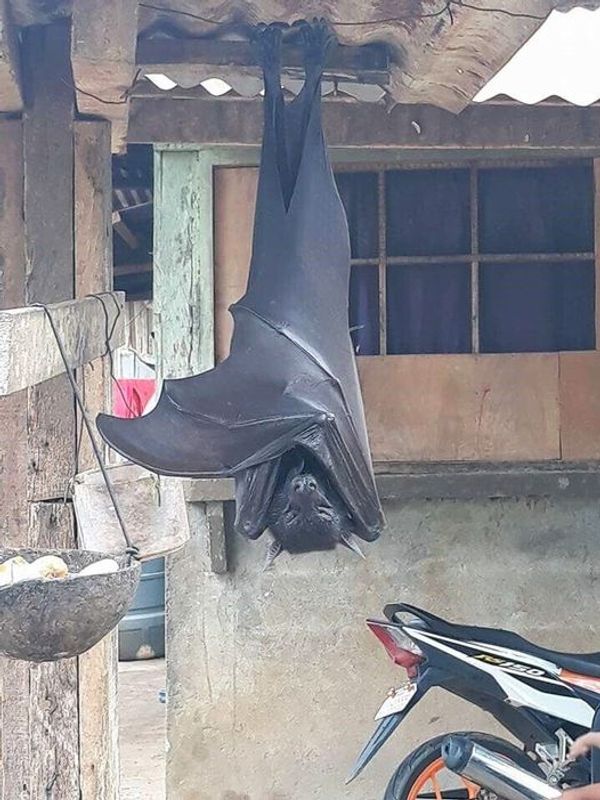
With wingspans almost as wide as Tom Cruise is tall, the giant golden-crowned bats of the Philippines might appear formidable at first glance. These magnificent creatures, with their skinny furry bodies and enormous wings, can resemble a cloaked vampire when they roost. However, despite their intimidating appearance, these gentle bats pose no threat to humans. In fact, they are struggling to survive due to habitat loss and illegal hunting, which has led to their endangered status.
When viral images of these innocent bats started circulating online, people were both fascinated and fearful of their size and predatory look. Some even described them as “human-sized” bats, which caused confusion and heightened fears. However, it’s important to clarify that while these bats are indeed large, they are not quite “human-sized” unless you compare them to a small child. For reference, their wingspan is about 5-foot-6, and they weigh less than 3 pounds.
The giant golden-crowned bat belongs to the megabat family and is one of the largest bat species in the world. As nocturnal herbivores, they feed on roots, fruits, and vegetables, primarily figs. These bats are unique to the jungles of the Philippines, often forming colonies of up to 10,000 members. During the day, they can be found hanging from trees in the treetops, snoozing with their friends, including the smaller large flying foxes.
Unlike many other bats that rely on echolocation, the giant golden-crowned flying foxes use their excellent eyesight and sense of smell to navigate the skies. They play a crucial role in their forest ecosystem by redistributing fig seeds, contributing to reforestation efforts. Unfortunately, the bats’ tireless work is being undermined by deforestation and hunting.
The Philippines has lost more than 90% of its old-growth forests, leading to the disappearance of these bats from many of their roosting sites on multiple islands. Destruction of their natural habitat and hunting for various purposes, such as sale, sport, and consumption, have caused the golden-crowned bat population to decline by 50% from 1986 to 2016. Consequently, they are now listed as endangered on The International Union for Conservation of Nature.
Although there are laws in place to protect these bats, such as the Philippine Wildlife Resources Conservation and Protection Act, enforcement is lacking. Even within protected areas, these bats are still hunted and killed in cruel practices. Hunters shoot the slumbering bats while they roost, often injuring them in the process. It’s a heartbreaking reality for these innocent and intelligent animals.
Despite the threats they face, golden-crowned flying foxes can be found in forests near human settlements. They are intelligent creatures and can distinguish between safe and dangerous areas. When they feel threatened, they relocate to roost in inaccessible areas, like slopes over 1,000 feet above sea level.
It’s important to dispel misconceptions about bats. While they possess unique physical features that some may find unsettling, the vast majority of bat species are harmless, and only three out of 1,300 bat species feed on blood. If we can look beyond their initial creepiness, we will see that these golden-crowned bats are actually quite adorable!
It’s truly heartbreaking to witness the loss of these innocent and intelligent animals and the destruction of their homes due to deforestation. If you share our concern for these endangered bats, please help raise awareness by sharing their story. Together, we can make a difference and protect these gentle giants of the Philippines.



